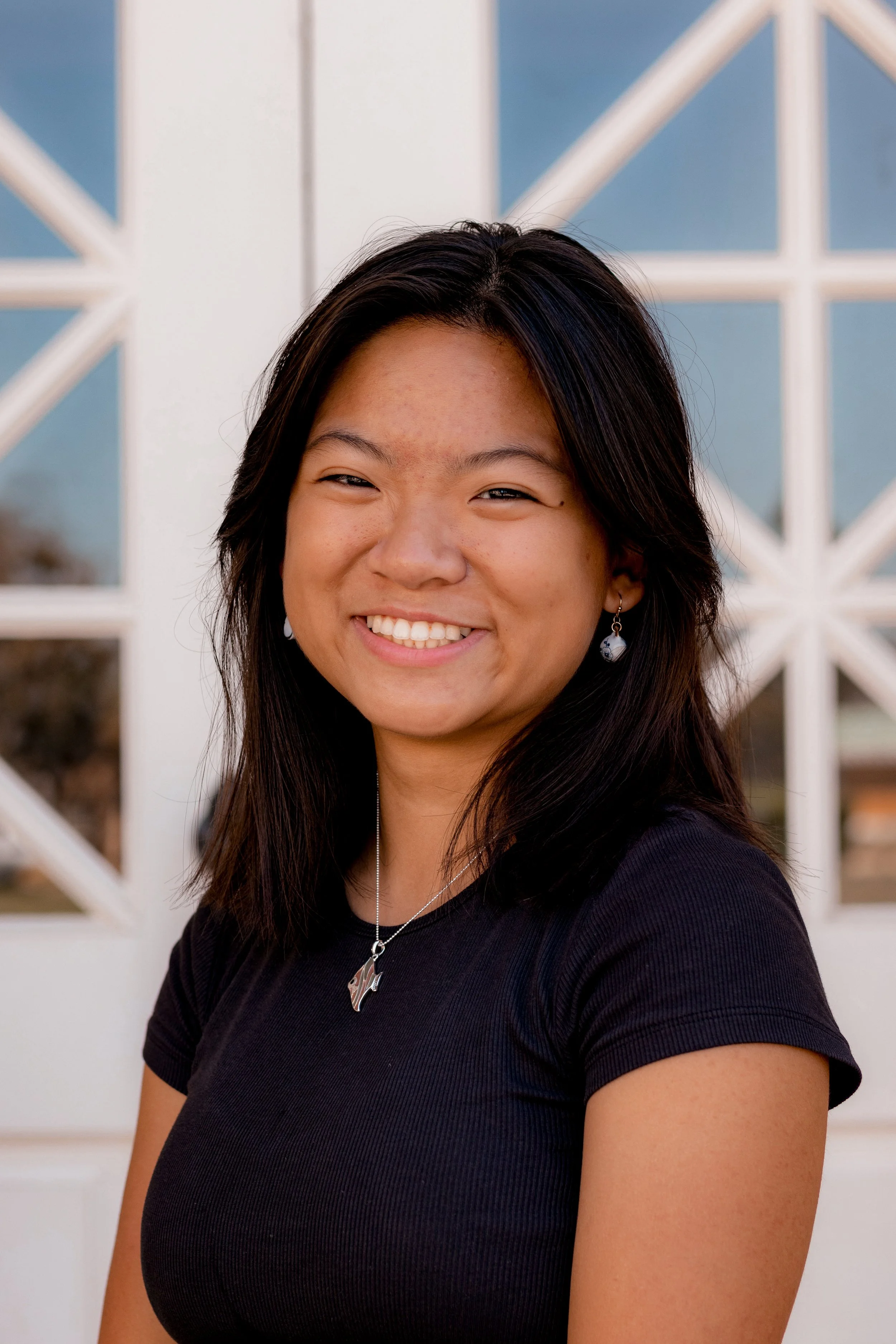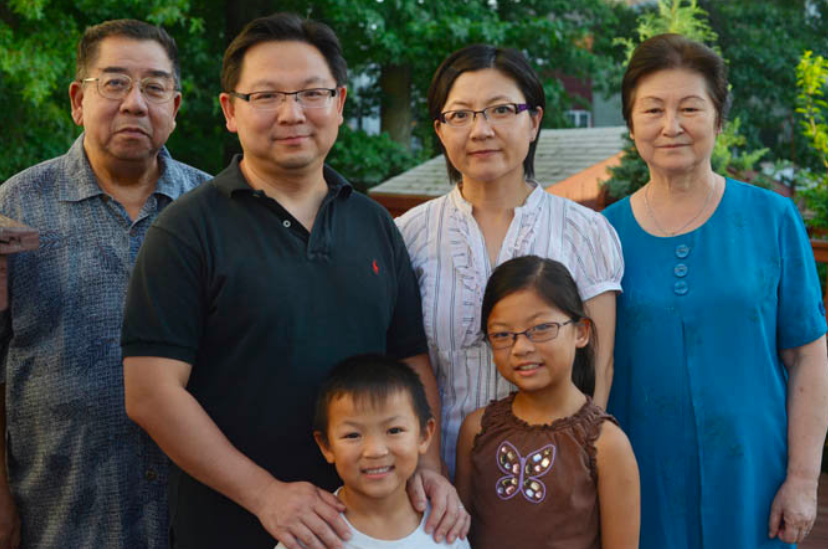Opinion | Exploring the Asian community from coast to coast
Observing how the Asian American community differs between the east and west coast, and how that builds a wider perspective on the Asian American experience holistically. Illustration by WYATT LINCOLN, illustrator
“There’s like, no Asians at this school,” said a freshman hailing from the Bay Area. We were talking at a Chapman Nikkei Student Union (NSU) club meeting. I looked at her in surprise, taking a pan of the room we were in. It was filled with Asians.
Earlier that week, I had gone to a Taiwanese American Student Association (TASA) meeting, where students congregated in a lecture room to play games and learn Taiwanese cultural lessons. These spaces were both packed with people who looked like me.
However, I couldn’t help but feel slightly out of place at those club meetings. There were slight nuances that hinted at the differences in our lives, by way of whether we were raised Asian American on the east or west coast.
Lisa Wong, video & podcast editor
I grew up in Staten Island, New York, aka “The Forgotten Borough” — a cute nickname given by our borough counterparts. For those who don’t know, Staten Island is like the suburbs of New York City. It’s filled with mostly middle-class folk who live on the cusp of city life.
Staten Island is composed of two parts: the North and South Shore. South Shore is what most people think of Staten Island: retirees, mansions, “my kids go to St. (insert saint) Catholic High School” parents and quiet walking trails.
North Shore is vastly different. The St. George area, the tip of the island closest to Manhattan, is always bustling. Local delis and family-owned dry cleaners are on every other corner. You’ll find authentic Albanian food a couple blocks down from a West African grocery store.
Staten Island is emblematic of New York’s status being the number one state with the most significant wealth disparity. A drive through Staten Island will take you through lush and quiet golf courses and lead you to smaller streets cramped with humble family businesses blocked in by torn metal fences.
I grew up around the middle of Staten Island and saw both of these two worlds collide. I had friends who lived in the projects and classmates who received a Mercedes Benz on their 17th birthday.
Historically, Staten Island was a predominantly white borough. But as time went on, a steady increase of immigrants began coming into Staten Island, my parents being two of them. As I got older, I began to see more and more Asians around my neighborhood.
On our family walks, we’d make observations like, “That house has Lunar New Year decor!”, “The neighbors that just moved in are Sri Lankan” or “That house has metal bars outside their door. Must be Chinese.” The Staten Island Advance (our local newspaper) even wrote an article about this, titled “Special report: On Staten Island, an Asian wave comes ashore” — a piece highlighting my family with our photo at the top.
At my home church, every one of my friends is first generation. At my highschool, a whopping majority of my person of color (POC) classmates were first generation or immigrants themselves. This commonality that I saw in the people I was surrounded by shaped the way we all functioned — whether we were aware of it or not. People had an unspoken understanding of each other’s lives because of this shared title of “first gen.” It subconsciously affected the way I empathize with people and connect with them.
It was really cool being able to interact with different people with various lifestyles, family dynamics and cultures. But at the end of the day, there was always an intangible connection that was comforting. Because of this, being a first gen Asian American was never really a huge deal for me. That is, until I came to college in California.
California is rich in history. It housed America’s first Asian immigrants, kicked them out and let them back in. America’s first Chinatown is in San Francisco. Generations of Asian Americans are rooted here.
The Staten Island Advance (our local newspaper) even wrote an article titled “Special report: On Staten Island, an Asian wave comes ashore” — a piece highlighting my family with our photo at the top. Photo courtesy of Lisa Wong.
Consequently, I began to meet more and more second and third gen Asian Americans. As I got to know them, differences became more apparent. They had grandparents that drove cars, parents that only spoke in perfect English and shopped at Whole Foods and all of them… really loved boba.
At the start of my freshman year, I was hyper-aware of these differences. I thought that those two or three generations of our families being in America created a vast separation, a disconnect I’ve never felt before with another person who looks like me. It created a sense of insecurity, like I couldn’t “break in” to the Asian community here, which already seemed so large and established.
It was overwhelming. I barely went to the cultural clubs I told myself I’d get involved with. This timidity eventually wore off with time and easing into familiarity. I caught up with understanding Californian Asian stereotypes, visited the 626 Night Market and I’m even starting to appreciate what quality boba tastes like (apparently Vivi Bubble Tea isn’t good).
A majority of the Californian Asian Americans I’ve met grew up in big pockets of Asian communities. If they were from the Bay Area, they most likely lived in cities heavily populated by Asian and white people. If they were from San Gabriel Valley, their high school was dominated by all sorts of Chens, Xus, Trans and Ngyuens.
Many of them have been able to experience a fusion of all sorts of Asian backgrounds. Bits and pieces of Korean, Indian, Filipino and Japanese culture almost seem to blend into each other.
In my favorite Chinese Yunnan restaurant at home, you’ll only ever see Chinese customers. But here, you’ll see a conglomeration of different people eating Vietnamese pho, drinking Taiwanese milk tea or learning about Japanese culture in an NSU meeting (by the way, Nikkei — the “N” in NSU — refers to descendants of Japanese immigrants across generations).
I feel incredibly blessed to have grown up on the east coast, being able to meet all kinds of different people from differing cultures, religions and ethnic backgrounds. However, being able to see the love Asian Americans here have for each other’s ethnicity is something that I haven’t really seen before.
Seriously, these sub-cultural groups are made up of so many people who are passionate about their cultural backgrounds and embrace all its aspects. Who would’ve thought that going to H-Mart, getting boba or eating hotpot would bring such a sense of community, connection and home? I didn’t. For me, these things were just a rhythm of life. But here, it might just be the one thing that connects people to their culture.
Maybe it’s the added layer of moving away from home to college, but I too am now finding solace in Asian supermarket trips, which I once thought mundane. If my aunties met these west coast Asian Americans, they’d probably say that they’re super Americanized and white-washed. But honestly, because of them, I’ve learned to treasure my Asianness a whole lot more.
It makes sense why that freshman girl I met felt that shock when she moved here. I get it. There are facets of discomfort that come with moving to a new environment. With that discomfort, I tried to find a community I thought I was very well acquainted with.
I thought there would be that automatic connection and understanding I found in my Asian American friends back at home. But I discovered a different kind of connection — one that allowed me to learn about different upbringings within the already incredibly diverse Asian community. I’ve interacted more with the different Asian groups that make up our community. And it’s allowed me to be more acquainted with the simple parts of my culture.



